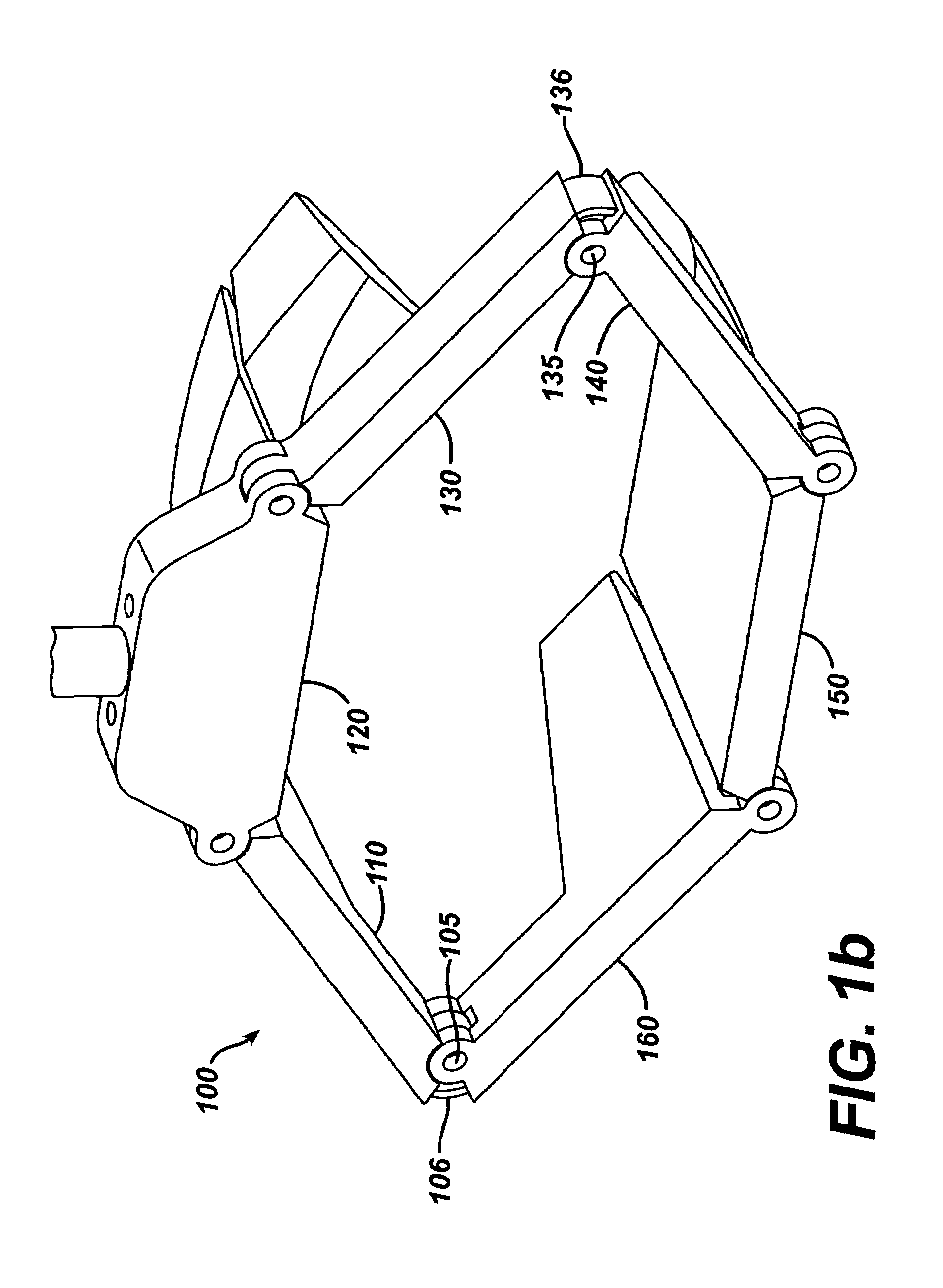Low profile surgical retractor
a retraction device, low-profile technology, applied in the field of medical devices, can solve the problems of affecting the surgeon's work efficiency, affecting the surgeon's ability to perform surgery, occupying a considerable amount of space, etc., and achieve the effect of inexpensive manufactur
- Summary
- Abstract
- Description
- Claims
- Application Information
AI Technical Summary
Benefits of technology
Problems solved by technology
Method used
Image
Examples
first embodiment
[0039]FIG. 1(a) shows a perspective cutaway view of a retractor according to the present invention. The retractor 100 includes a number of retractor blade components 110, 120, 130, 140, 150 and 160, in this case six. Each of retractor blade components 110, 120, 130, 140, 150 and 160 are joined pivotally at pivot points 105, 115, 125, 135, 145 and 155, and together form a periphery of the retractor 100. The retractor blade components may be joined end to end, for instance. Neighboring retractor blade components may be separate components that are fixed together, e.g., by pins, or may be formed from a common material, in which case the pivot points may comprise living hinges. A living hinge generally includes a weakened, flexible area of material between neighboring retractor blade components.
[0040]A cable 170 has a deployed length that is guided by and / or through, or alternately attached to, one or more of the retractor blade components 110, 120, 130, 140, 150 and 160. In one possibl...
second embodiment
[0062]FIG. 3 shows a perspective cutaway view of a retractor 300 according to the present invention. Here, one end 171 of the cable 170 terminates at a fixed point, such as at a ball or block structure 310, which is carried by the retractor blade component 120. The other end 172 of the cable 170 is attached to the winding mechanism 180. In this approach, only one end of the cable is wound up by the winding mechanism 180, so twice as many rotations of the turn knob are required compared to the embodiment of FIGS. 2(a) and 2(c) to achieve the same amount of winding or unwinding. This may be desirable since it provides a finer control of the winding and unwinding. Note that, in this and other embodiments, gearing may be used so that the rotation of the turn knob 210 relative to the winding mechanism 180 is greater than or less than 1:1.
third embodiment
[0063]FIG. 4 shows a perspective cutaway view of a retractor 400 according to the present invention. Here, one end of the cable 170 remains attached to the fixed structure 310, while the other end of the cable is wound around posts or winding pins 410 and 420 which are arranged in the retractor blade component 120, before terminating at the winding mechanism 180. Due to the 180-degree turns about the pins 410 and 420, a moderate amount of friction between the cable 170 and the pins 410 and 420 that prevents the cable from unwinding due to the force of the retracted tissue, yet still allows the cable to be wound up or unwound by the turn knob 210 with relative ease. Such an approach avoids the need for a ratchet mechanism to prevent the retractor from closing, e.g., when the handle is removed from the retractor blade component 120. The amount of friction will depend on factors such as the size and material of the cable 170 and pins 410 and 420, and the number of turns of the cable 17...
PUM
 Login to View More
Login to View More Abstract
Description
Claims
Application Information
 Login to View More
Login to View More - R&D
- Intellectual Property
- Life Sciences
- Materials
- Tech Scout
- Unparalleled Data Quality
- Higher Quality Content
- 60% Fewer Hallucinations
Browse by: Latest US Patents, China's latest patents, Technical Efficacy Thesaurus, Application Domain, Technology Topic, Popular Technical Reports.
© 2025 PatSnap. All rights reserved.Legal|Privacy policy|Modern Slavery Act Transparency Statement|Sitemap|About US| Contact US: help@patsnap.com



